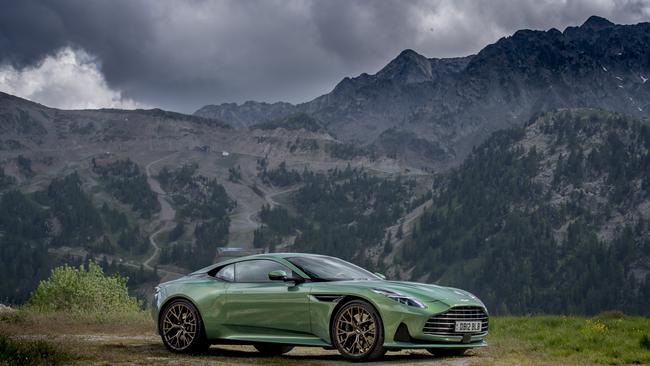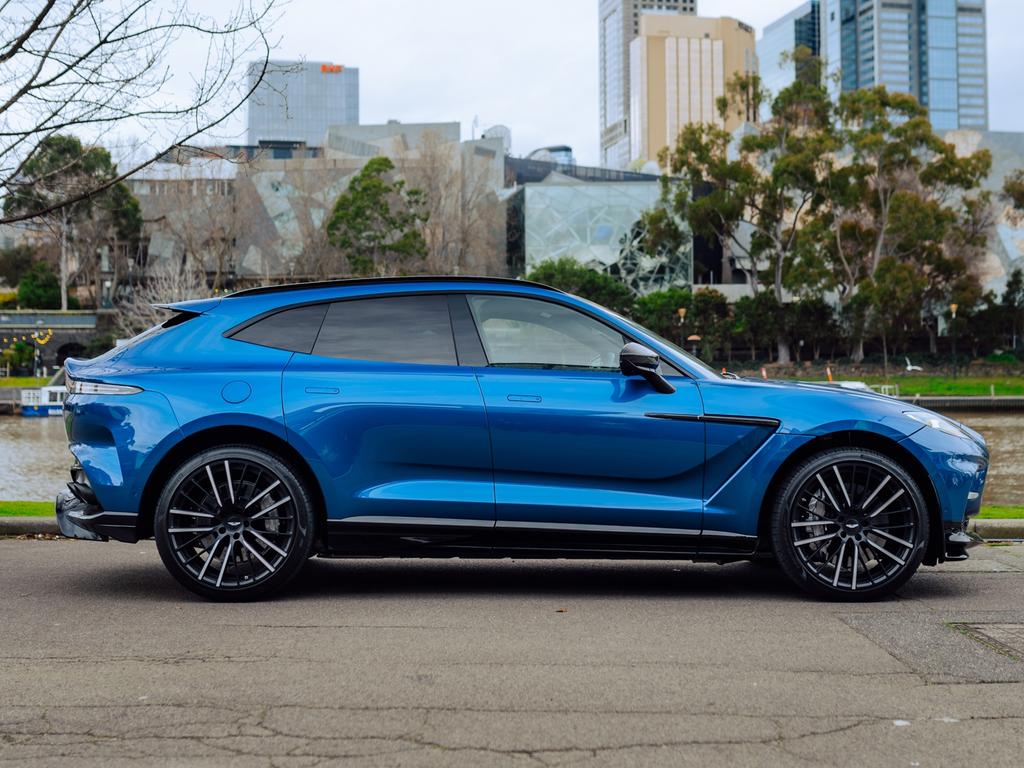Aston Martin DB12 creates a Bond forever
Synonymous with on and off-screen glamour, the Aston Martin DB12 evokes great excitement in those who experience the thrill of driving it.

While bookmakers speculate on the identity of the next James Bond actor, it’s an odds-on certainty that one brand, and one brand alone, will score the automotive lead role (hint: it’s not SsangYong). And if the movie’s producers, Eon Films, have any sense, the car adorning your screen right now will surely be 007’s ride of choice.
The Aston Martin DB12 is the latest addition to a cinematic bloodline that can be traced back to Goldfinger in 1964, when Q first introduced Bond, played by Sean Connery, to a gorgeous Silver Birch DB5 complete with bulletproof windows and front-wing machine guns. From that moment, a cultural icon was born.
As befits a model synonymous with on and off-screen glamour, the car was recently unveiled to the world’s press on the forecourt of Monaco’s super-swanky Maybourne Riviera hotel, a stone’s throw from the streets where motorsport’s famous Formula 1 race is held every year.
Of course, the stage-managed setting — perched high on a cliff with soaring views along the Mediterranean coastline, taking in some of the world’s most show-stopping waterfront properties — is designed to seduce even the flintiest of journalistic hearts, but Aston could have launched this vehicle in a sewage recycling plant and it wouldn’t detract from its breath-taking beauty.
Still, clearly we are seduced, and it’s hard not to be with the sun glinting off the DB12’s Green In India bodywork during our first walk around. While hardly a radical departure from its predecessors — the silhouette is almost identical to the DB11’s, keeping the required quota of grand tourer elegance — cosmetic tweaks such as an arresting new larger grille and exaggerated rear haunches make it a more aggressive proposition.
Talk to Aston Martin people for any length of time and “aggressive” is a word they’re keen to push, along with “sporty”, “performance” and, sometimes, “Formula 1” — just in case you need reminding that the British marque has genuine motorsport heritage, or that they’re currently number three in the F1 Constructor Standings.
In fact, ever since chairman Lawrence Stroll took the reins three-and-a-half years ago, Aston has vowed to crank up the dynamism across all future launches, bringing the company closer to Ferrari and Lamborghini in terms of potency and, thus, excitement.
Sure, luxury is nice, but no groins have ever been stirred by lambswool carpets.
Which goes some way to explaining the big, shiny “World’s First Super Tourer” sign fixed to the dry stone wall behind the hotel show car. The rear-wheel drive, front-engined DB12 aims to fill motoring’s smallest niche: the gap between comfortable, one-finger-on-the-steering-wheel grand tourers and mental, blow-your-hands-from-their-wrists supercars.
Mere minutes after Sport mode is engaged on the testing roads of the Route Napoléon, a 314km driving paradise wedged between the Riviera and the foothills of the Alps, it’s clear that the mission has been accomplished, and then some.
The DB12 is a bona fide sports car, not one that’ll bite your face off if you even look at it the wrong way, but one designed to make stomach juices fizz whenever foot and accelerator combine, be that using the prodigious torque on offer above 2500rpm to blast through short mountain straights, or calling on the ultra-fast-shifting eight-speed automatic transmission and scintillating acceleration (0-100km/h in 3.6 seconds) to overtake obnoxiously slow Sunday drivers; or leaping eagerly into tight corners with scant regard for the precipitous drop just inches from the tyres because the car is so beautifully poised and the ESC (Electronic Stability Control) system so well-sorted.

There is an even more ferocious Sport Plus driving setting, but some unexpected tropical-style summer rainstorms made us think twice about using it, coming to the conclusion that both the Aston and our skeletons wouldn’t look so good in a crumpled heap on the side of the road.
The main protagonist in the new DB chapter is the engine: the 5.2-litre V12 from the DB11 has been ditched in favour of a 4.0-litre twin-turbo V8, which, despite being smaller, manages — with the help of some old-fashioned analogue engineering tricks such as larger turbos and modified camshafts — to produce 500kW and 800Nm, an extra 30kW and 100Nm over the old car.
While the DB12 is not quite insane enough overall to plant a flag in supercar territory, they’re supercar numbers.
Saying that, not even the most red-blooded of drivers will want to cane a car of this ilk all day; this is not why you buy anything with a DB nameplate attached to it. And that’s why, despite all the talk of beefed-up performance and extra dynamism, Aston Martin knows it can never compromise one iota on the ultra-luxurious nature of the driving experience. And thankfully they haven’t, wrapping the cabin in premium hand-stitched Bridge of Weir leathers and carbon fibre trim, and installing some lovely tactile switchgear (including a particularly exquisite knurled rotary controller).
In chilled GT mode, with the refined suspension working in conjunction with bespoke, noise-cancelling Michelin Pilot 5S tyres, life feels good in here — a dreamy break from the daily turbulence of the outside world.
Some may say that’s the least buyers can expect after dropping $455,000, but Aston has responded to past criticisms of its horrifically dated in-car tech by developing its own in-house infotainment system, compatible through its 10.25-inch high-res screen with both Apple CarPlay and Android Auto, and boasting full online connectivity — meaning you can drop a quick email to Eon Films, telling them to do the right thing and make this car a star.
The Aston Martin DB12 launches locally in the third quarter of 2023, but you can get excited about it right now.





